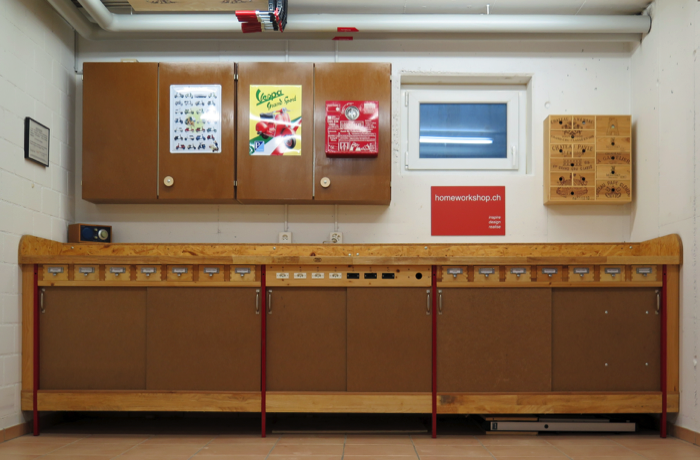Workbench 3.0
All fit workbench
The workbench is one of the key elements in a workshop. In my case I re-used the red metal legs of a standard workbench which I bought in a supermarket for homeworkers. The rest is self-made and tailored to my needs. The surface of the workbench is divided into a tray surface (surface on the back of the bench) and a desktop. The separation of surfaces into two levels simplifies the handling of tools and materials during a construction phase.
The holes in the desktop are used for screw clamps allowing objects to be fixed on the bench. In addition I framed the two sides of the workbench with OSB plates. Those do avoid small bits and pieces to fall off the workbench. On the front of the workbench several plug sockets are available for hand machines. The white sockets are directly connected to electricity and the black sockets do turn on an integrated dust collector as soon as electricity is consumed with any hand machine connected to one of the black sockets. The connection for the dust collector is also integrated in the front panel of the workbench. Below the workbench, there is room for air compressor, vacuum cleaner and for various machines, equipment and material. The entire front of the workbench can be closed with sliding doors.







Turn on English subtitles by clicking the CC icon